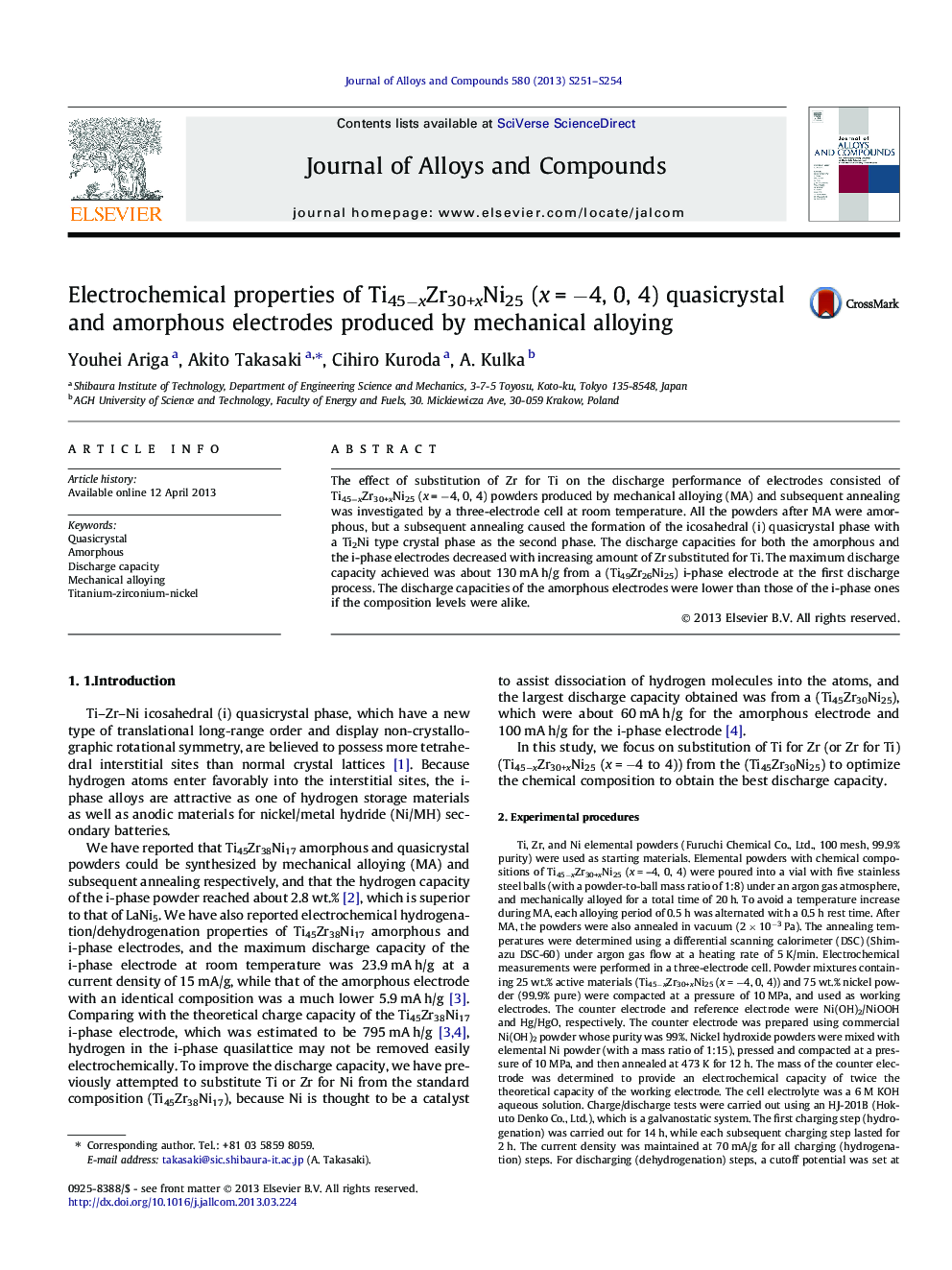| Article ID | Journal | Published Year | Pages | File Type |
|---|---|---|---|---|
| 1613412 | Journal of Alloys and Compounds | 2013 | 4 Pages |
•All the Ti45−xZr30+xNi25 powders (x = −4 to 4) after mechanical alloying were amorphous.•Subsequent annealing formed the icosahedral quasicrystal phase with a Ti2Ni phase.•The maximum discharge capacity was about 90 mA h/g for (Ti49Zr26Ni25) amorphous.•The maximum discharge capacity was about 130 mA h/g for (Ti49Zr26Ni25) quasicrystal.•The amorphous partially converted to a hydride, but the quasicrystal remained stable.
The effect of substitution of Zr for Ti on the discharge performance of electrodes consisted of Ti45−xZr30+xNi25 (x = −4, 0, 4) powders produced by mechanical alloying (MA) and subsequent annealing was investigated by a three-electrode cell at room temperature. All the powders after MA were amorphous, but a subsequent annealing caused the formation of the icosahedral (i) quasicrystal phase with a Ti2Ni type crystal phase as the second phase. The discharge capacities for both the amorphous and the i-phase electrodes decreased with increasing amount of Zr substituted for Ti. The maximum discharge capacity achieved was about 130 mA h/g from a (Ti49Zr26Ni25) i-phase electrode at the first discharge process. The discharge capacities of the amorphous electrodes were lower than those of the i-phase ones if the composition levels were alike.
